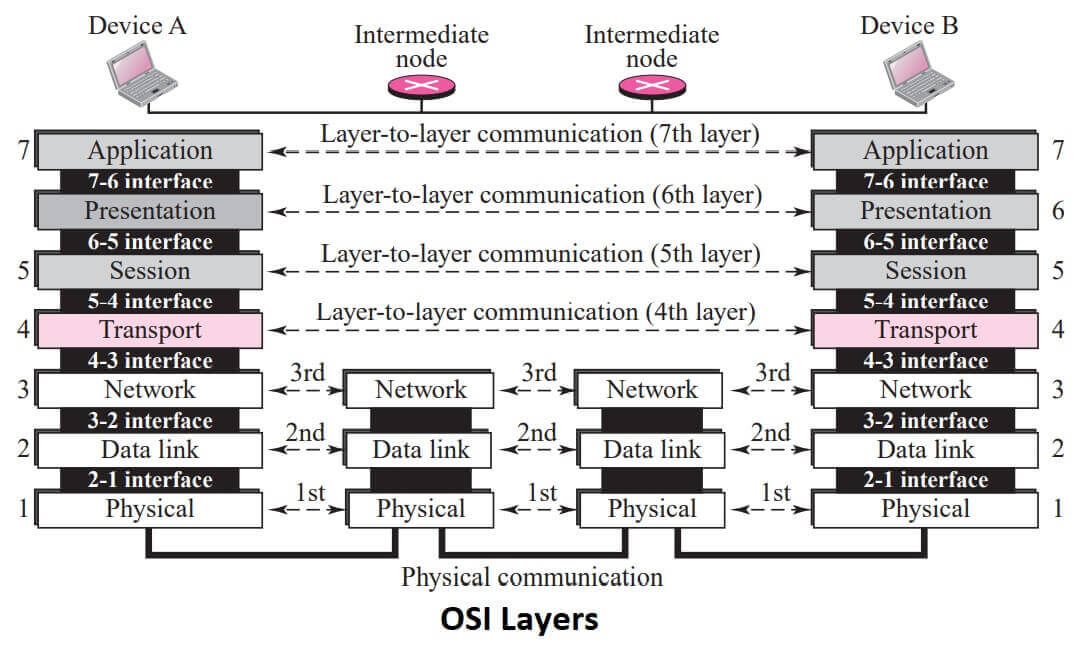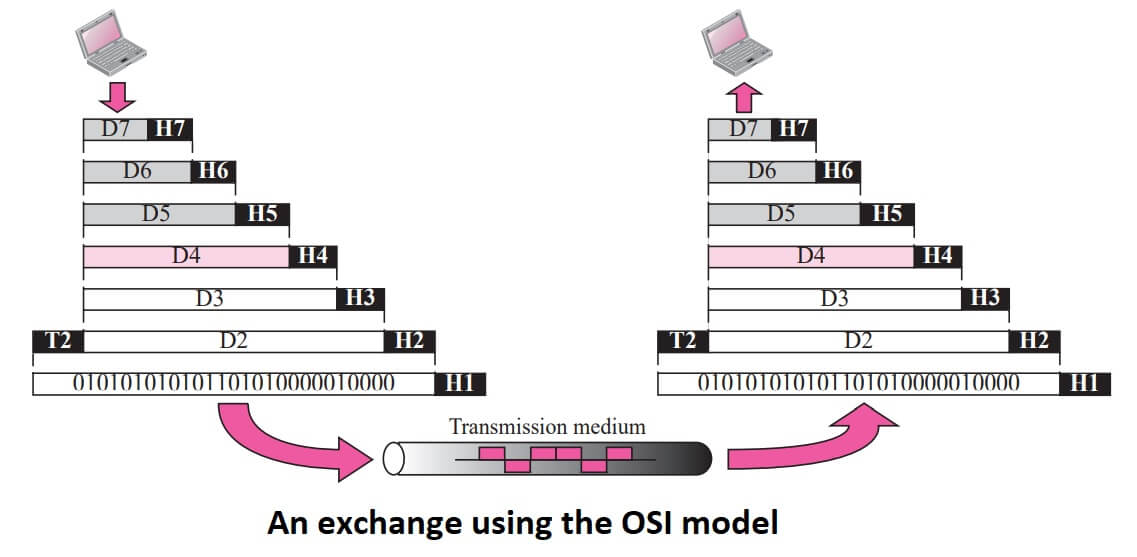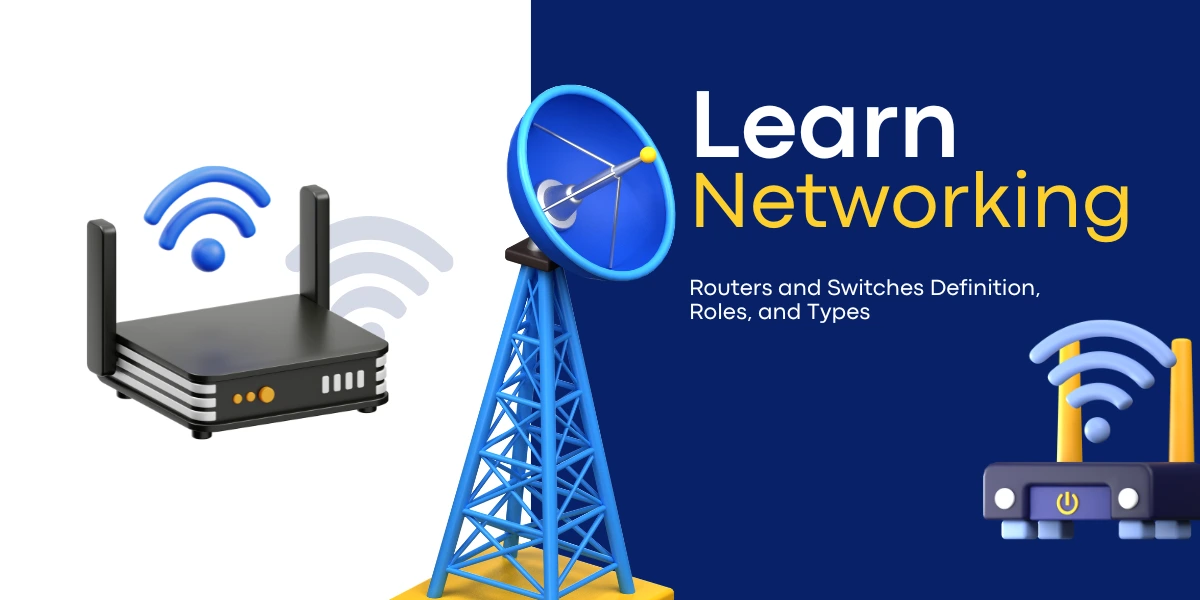Established in 1947, the International Standards Organization (ISO) is a multinational body dedicated to worldwide agreement on international standards. Almost three-fourths of countries in the world are represented in the ISO. An ISO standard that covers all aspects of network communications is the Open System Interconnection (OSI) model. It was first introduced in the late 1970s.
ISO is the organization; OSI is the model.
An open system is a set of protocols that allows any two different systems to communicate regardless of their underlying architecture. The purpose of the OSI model is to show how to facilitate communication between different systems without requiring changes to the logic of the underlying hardware and software.
The OSI model is not a protocol; it is a model for understanding and designing a network architecture that is flexible, robust, and interoperable. The OSI model was intended to be the basis for the creation of the protocols in the OSI stack.
The OSI model is a layered framework for the design of network systems that allows communication between all types of computer systems. It consists of seven separate but related layers, each of which defines a part of the process of moving information across a network. Understanding the fundamentals of the OSI model provides a solid basis for exploring data communications.

Layered Architecture
The OSI model is composed of seven ordered layers: physical (layer 1), data link (layer 2), network (layer 3), transport (layer 4), session (layer 5), presentation (layer 6), and application (layer 7).
Figure shows the layers involved when a message is sent from device A to device B. As the message travels from A to B, it may pass through many intermediate nodes. These intermediate nodes usually involve only the first three layers of the OSI model.
In developing the model, the designers distilled the process of transmitting data to its most fundamental elements. They identified which networking functions had related uses and collected those functions into discrete groups that became the layers. Each layer defines a family of functions distinct from those of the other layers.
By defining and localizing functionality in this fashion, the designers created an architecture that is both comprehensive and flexible. Most important, the OSI model allows complete interoperability between otherwise incompatible systems.
Within a single machine, each layer calls upon the services of the layer just below it. Layer 3, for example, uses the services provided by layer 2 and provides services for layer 4. Between machines, layer x on one machine logically communicates with layer x on another machine. This communication is governed by an agreed-upon series of rules and conventions called protocols.

Layer-to-Layer Communication
In Figure, device A sends a message to device B (through intermediate nodes). At the sending site, the message is moved down from layer 7 to layer 1. At layer 1 the entire package is converted to a form that can be transferred to the receiving site. At the receiving site, the message is moved up from layer 1 to layer 7.
Interfaces between Layers
The passing of the data and network information down through the layers of the sending device and back up through the layers of the receiving device is made possible by an interface between each pair of adjacent layers. Each interface defines what information and services a layer must provide for the layer above it. Well defined interfaces and layer functions provide modularity to a network.
As long as a layer provides the expected services to the layer above it, the specific implementation of its functions can be modified or replaced without requiring changes to the surrounding layers.
Organization of the Layers
The seven layers can be thought of as belonging to three subgroups. Layers 1, 2, and 3 physical, data link, and network are the network support layers; they deal with the physical aspects of moving data from one device to another (such as electrical specifications, physical connections, physical addressing, and transport timing and reliability). Layers 5, 6, and 7 session, presentation, and application can be thought of as the user support layers; they allow interoperability among unrelated software systems. Layer 4, the transport layer, links the two subgroups and ensures that what the lower layers have transmitted is in a form that the upper layers can use.
The upper Open System Interconnection OSI layers are almost always implemented in software; lower layers are a combination of hardware and software, except for the physical layer, which is mostly hardware.
In Figure, which gives an overall view of the Open System Interconnection OSI layers, D7 data means the data unit at layer 7, D6 data means the data unit at layer 6, and so on. The process starts at layer 7 (the application layer), then moves from layer to layer in descending, sequential order. At each layer, a header can be added to the data unit. At layer 2, a trailer may also be added. When the formatted data unit passes through the physical layer (layer 1), it is changed into an electromagnetic signal and transported along a physical link.

Upon reaching its destination, the signal passes into layer 1 and is transformed back into digital form. The data units then move back up through the Open System Interconnection OSI layers. As each block of data reaches the next higher layer, the headers and trailers attached to it at the corresponding sending layer are removed, and actions appropriate to that layer are taken. By the time it reaches layer 7, the message is again in a form appropriate to the application and is made available to the recipient.
Encapsulation
Figure reveals another aspect of data communications in the OSI model: encapsulation. A packet at level 7 is encapsulated in the packet at level 6. The whole packet at level 6 is encapsulated in a packet at level 5, and so on.
In other words, the data part of a packet at level N is carrying the whole packet (data and overhead) from level N + 1. The concept is called encapsulation because level N is not aware what part of the encapsulated packet is data and what part is the header or trailer. For level N, the whole packet coming from level N + 1 is treated as one integral unit.





